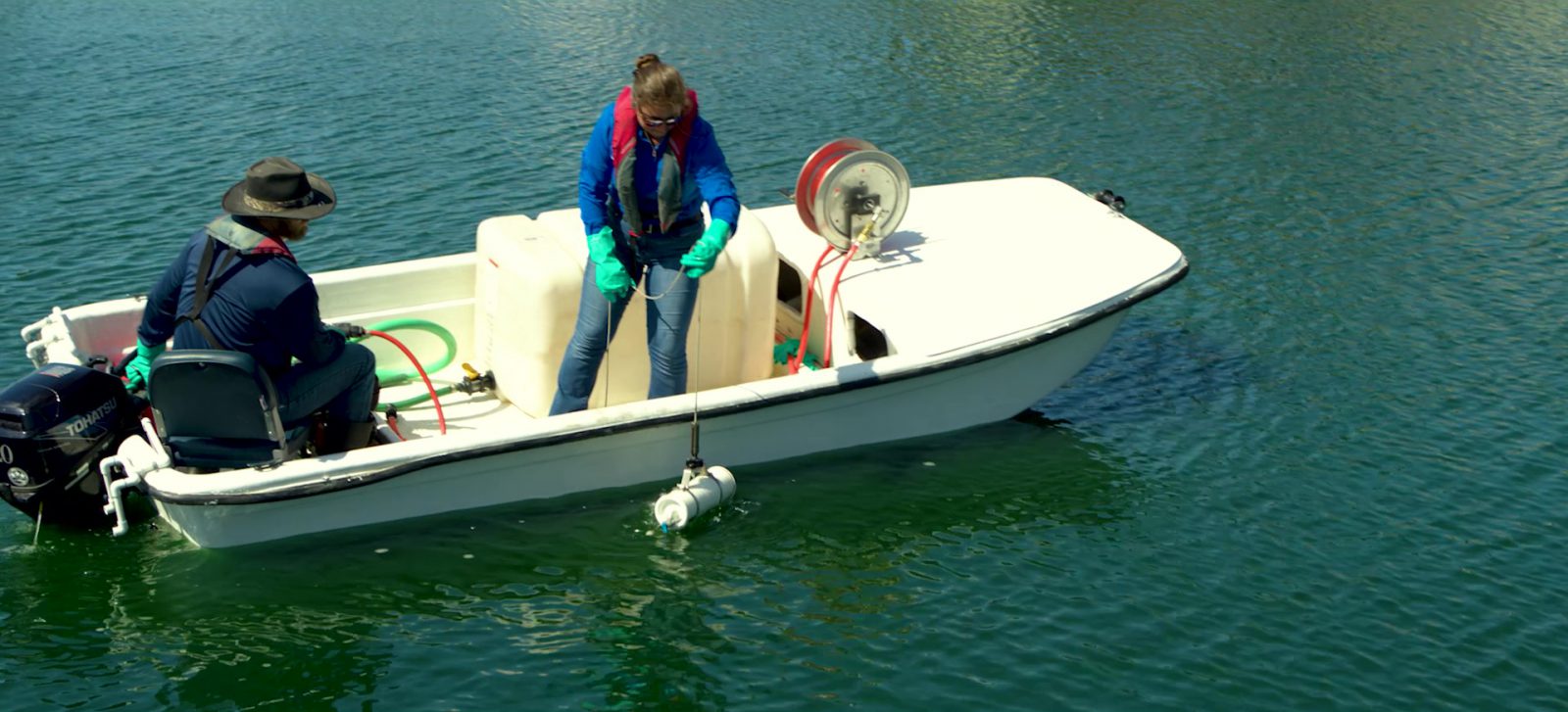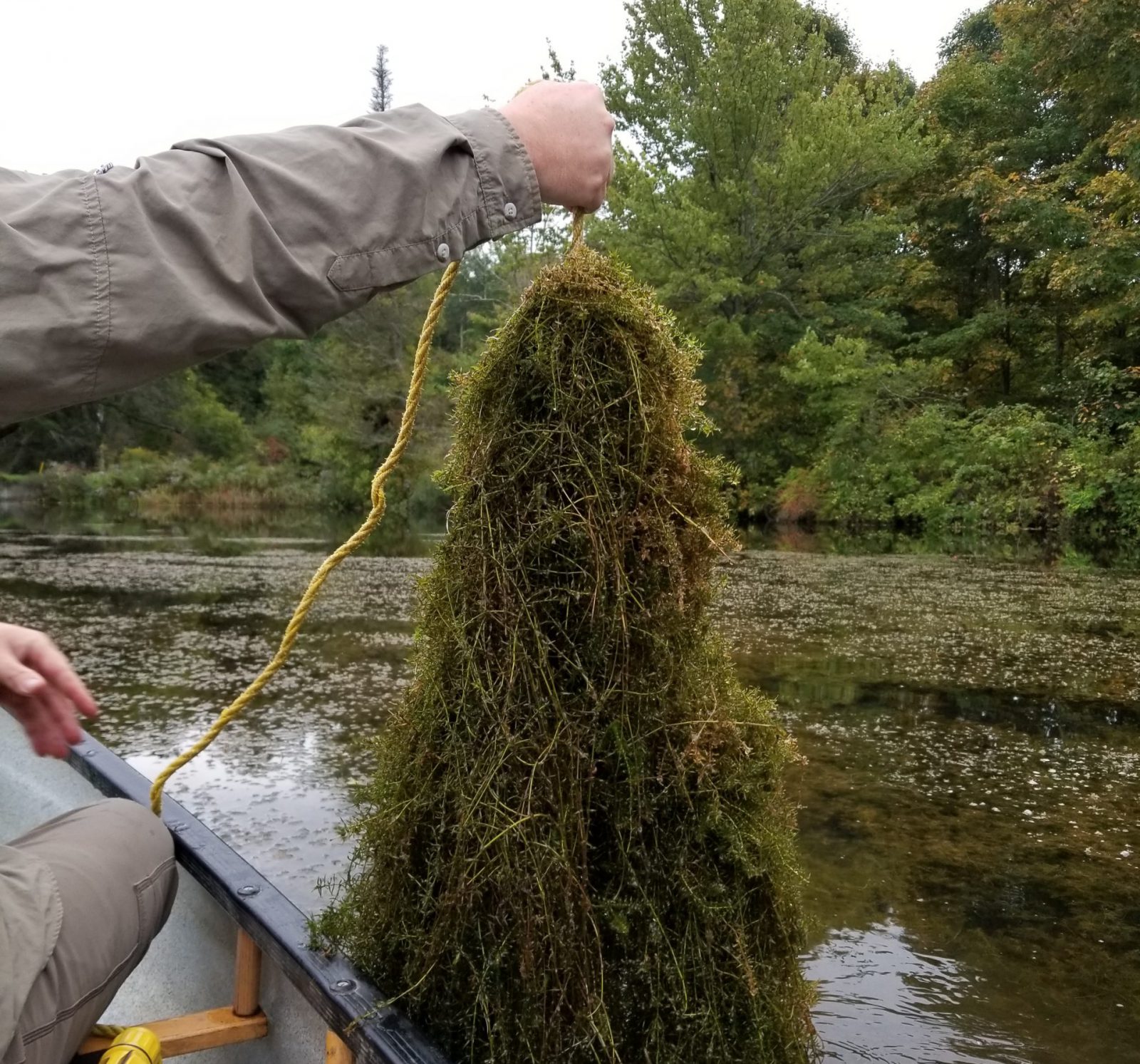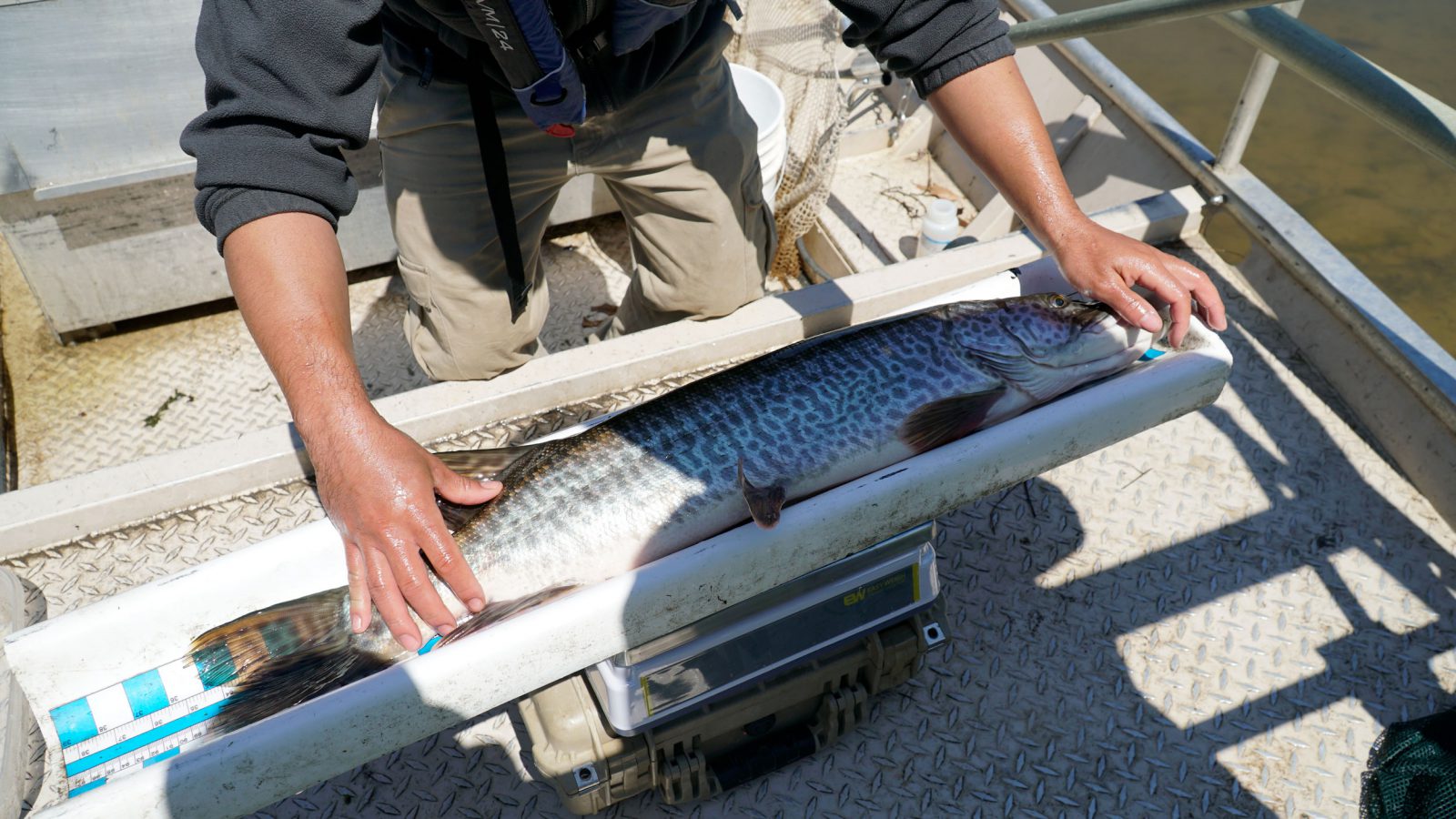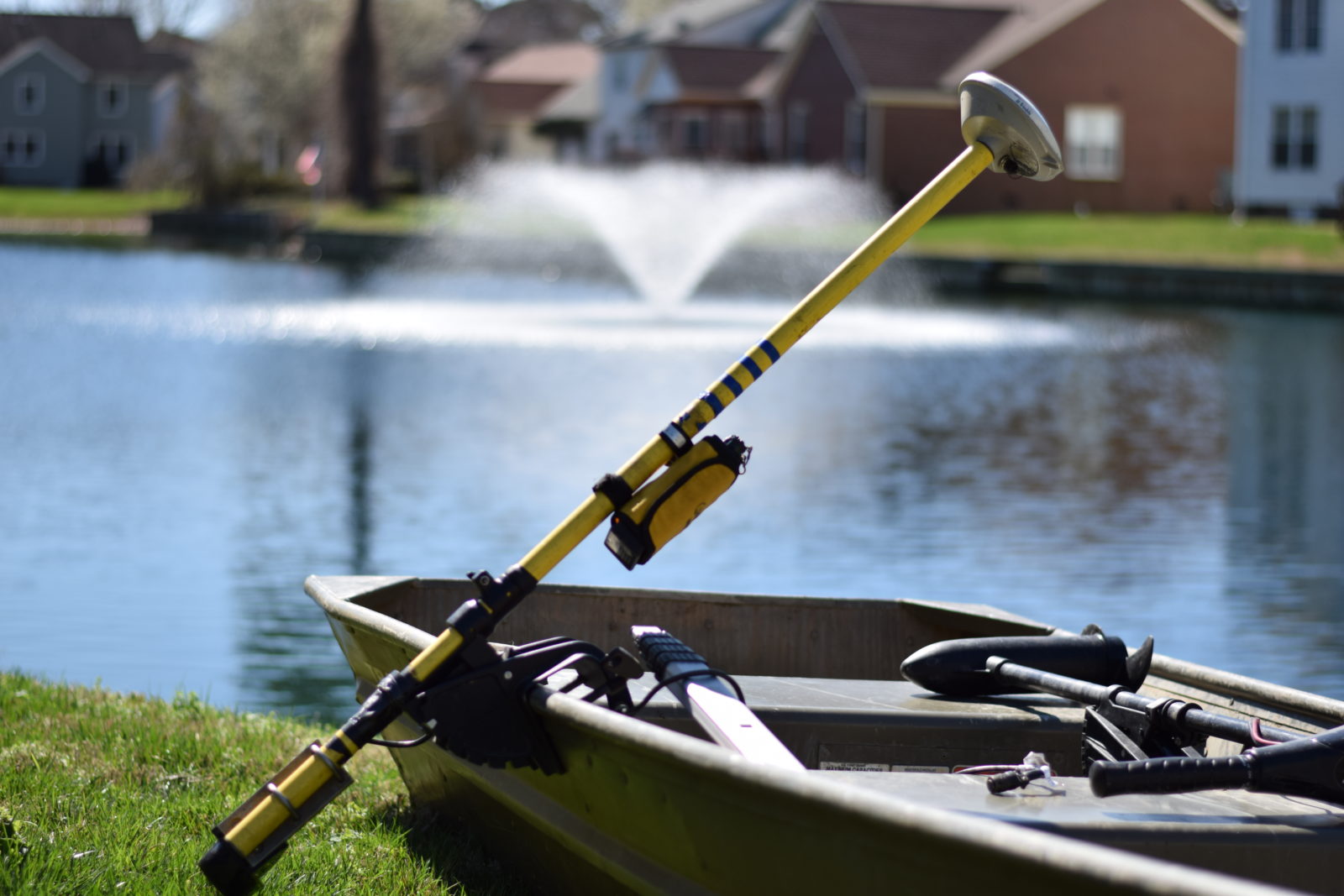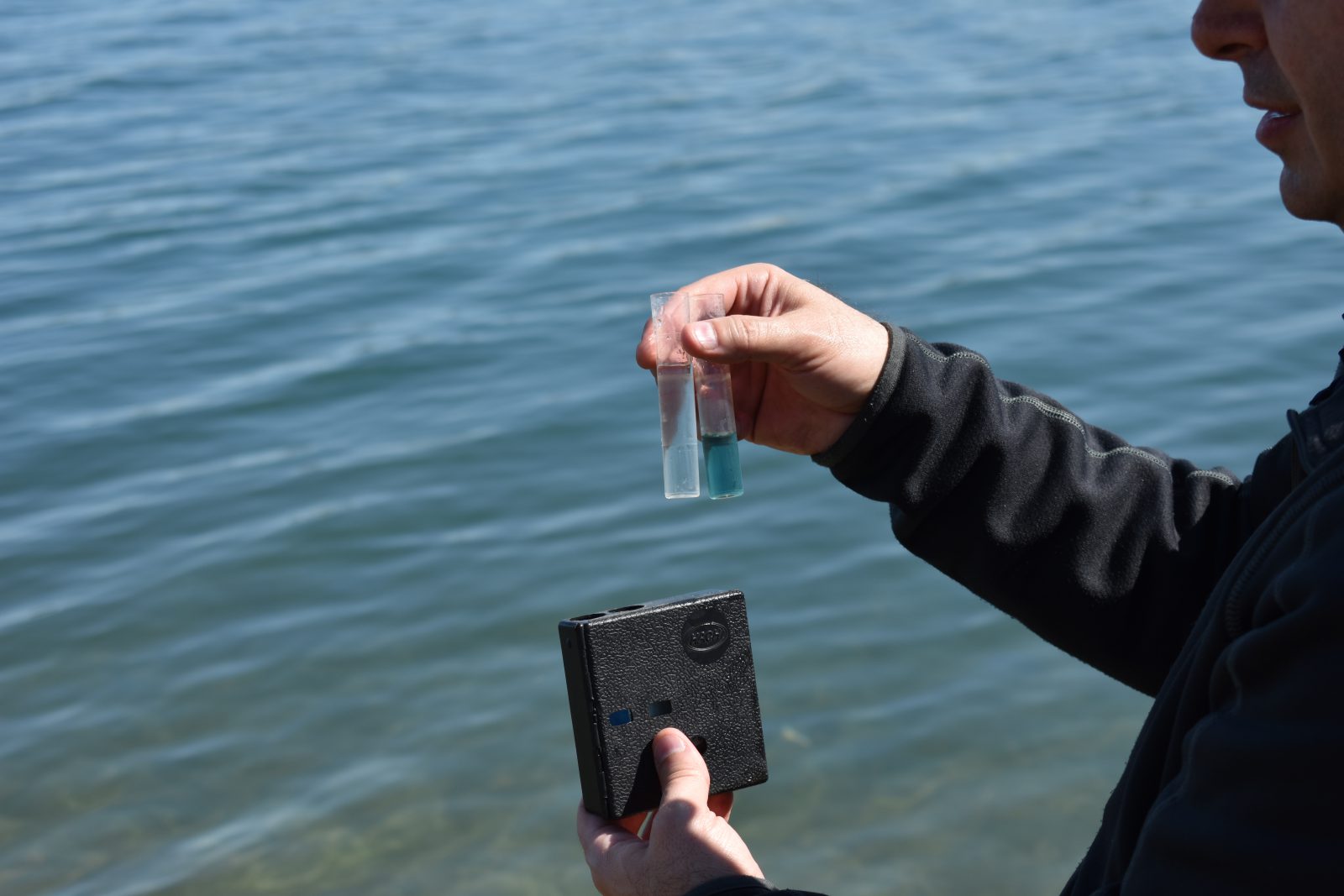
Lake and Pond Management: What Information Should You Collect?
Whether you are a community manager, golf course superintendent, private property owner, or a member of a lake association, you know a lot of care goes into maintaining your waterbody, and that there’s a lot to keep track of throughout the year. But what information do you need? How can you use insights and data to predict upcoming issues or determine what treatments you may need? And how do you even go about collecting this valuable information? A lake management partner can help you answer these questions, and support you in making the right decisions for your waterbody.
Aquatic ecosystems are finicky. Seemingly minute factors can have a significant impact on the look and performance of a waterbody. A like-minded professional can collect, interpret, and employ a vast array of data necessary to address the many factors affecting your property and help you cultivate a waterbody that you’re proud of.
Collecting Water Quality Data
Water quality refers to the overall condition of the water derived from chemical, biological and physical characteristics. Water quality scientists lean on many types of tests, tools, and strategies to gain insight into the health of an aquatic environment:
- Phosphorous – Phosphorus is one of the key elements required for plant and animal growth, and a deficiency can inhibit growth throughout an ecosystem. Phosphorus is often scarce in well-oxygenated lakes, and low phosphorus levels limit the production of freshwater systems. Conversely, in excess levels, phosphorus can fuel nuisance plant and algae growth.
- Nitrogen – Total Nitrogen is an essential nutrient for plants and animals. However, an excess amount of nitrogen in a waterway can result in low dissolved oxygen levels and negative impacts on plants and organisms. Sources of nitrogen include wastewater treatment plants, runoff from fertilized lawns and croplands, failing septic systems, runoff from animal manure and storage areas and industrial discharges that contain corrosion inhibitors. The three forms of nitrogen commonly measured in waterbodies are ammonia, nitrates, and nitrites.
- Chlorophyll-a – Chlorophyll-a is a measure of the number of algae growing in a waterbody. It is used to classify the trophic condition of a waterbody – which refers to the overall level of biological activity in the water. Although algae are a natural part of freshwater ecosystems, too many algae can cause aesthetic problems such as green scum and bad odors, as well as decreased levels of dissolved oxygen.
- Harmful Algae Blooms (HABs) – HABs are an overgrowth of toxin-producing algae in fresh or marine water. Not all blooms create toxins, but all blooms can create environmental imbalances. Nutrient pollution from human activities can promote more severe blooms that occur more often. Harmful algal blooms can be green, blue, red, white, or brown, often appearing like paint or oil on the surface of the water.
- Microbial Bacteria Identification – E. coli is a fecal coliform bacterium specific to fecal material from humans and other warm-blooded animals. EPA recommends E. coli as the top indicator of health risks from water contact in recreational waters.
- Secchi Disk – A Secchi disk test is used to measure the clarity or turbidity of water. The disk is lowered into the water until it is no longer visible. This depth is measured and known as the Secchi depth.
By keeping track of these characteristics and implementing periodic testing, decision-makers can stay ahead of HABs, fish kills, plant overgrowths, and other harmful conditions that are costly and difficult to eradicate, and often a source of complaints and frustration. A professional lake manager can help you implement these water quality tests on a periodic, timely basis and provide recommendations to help turn complaints into compliments.
Algae & Aquatic Plant Identification
There are a lot of benefits to having native aquatic plants in your lake and pond. Plants are a critical part of keeping a water system balanced – they help improve overall water quality, provide oxygen, enhance fish and wildlife habitats and create shorelines and littoral areas that serve as filters for detrimental runoff.
Yet, the overgrowth of native species and the presence of harmful invasive weeds can be catastrophic to an aquatic ecosystem, its native plant community, fish populations, recreational opportunities, and property values. Their growth and subsequent decay can also contribute to muck, algae, and HABs.
Ongoing monitoring and data collection help ensure nuisance and invasive plants are identified before growth becomes too difficult to manage. Your lake management partner can help you determine the best course of action – whether that’s applying EPA-registered herbicides, physical removal, or other eco-friendly solutions.
Analyzing Your Fishery's Biomass
Like vegetation, it is important to have a firm understanding of the wildlife like fish, waterfowl, and other animals within your waters. Of course, a flourishing ecosystem tends to have greater fishing and nature-watching opportunities, but wildlife also helps to naturally keep undesirable weed and algae growth at bay.
A lake should have a healthy, thriving fish population, and this requires some care to maintain. For example, you will want to keep a balance between predator fish and the prey fish they feed upon – a common rule of thumb is three prey fish per predator. Having this structure allows the prey fish an opportunity to reproduce at optimal rates.
Some of the factors that support a healthy fish population include:
- The size of each fish
- Introduction of new fish/building populations
- Timing of restocks
- Acclimating new fish
- Providing diverse habitat
- High dissolved oxygen levels
A professional fish survey can help ensure that you have a comprehensive understanding of what fish are already in your lake or pond, their health, their stage of maturity, and opportunities for new species. During surveys, professionals may use techniques like electrofishing to collect accurate data that can be compared year over year. This information can help stakeholders make important decisions around fish stocking, water quality management, and more.
Soft Sediment Analysis & Bathymetric Mapping
Soft sediment refers to the buildup of muck – loose sand, clay, silt, decaying plants, and other loose particles – as a result of erosion or decay accumulation. Erosion happens naturally and is the fate of all waterbodies, but nearly 70% of erosion is caused by human activity.
As sediment accumulates, it can:
- Clog storm drains and catch basins (increasing potential for flooding)
- Disrupt water flow and destroy fish and wildlife habitats
- Decrease water depths and inhibit the recreational and commercial use of water
Because of this, it is essential to be aware of the structural integrity of your lake or pond bottom. A sediment analysis mapping done to locate areas of different sediment types paired with manual surveys to determine the makeup of said sediment will allow you to stay ahead of any potential issues, erosion control solutions work to combat human-related acceleration, and plan for any future, such as bioengineered shoreline technology.
Some of the benefits of lake sediment hardness mapping include:
- Planning and budgeting for sediment removal/dredging
- Determining the stability and composition of lake bottoms for structures such as docks
- Implementing sediment/debris filtration practices
Bathymetric mapping surveys the contours and depths of a lake or other waterbody. In the case that your lake has a contour map from the 1950s, 60s, or 70s, it would be wise to create an updated map utilizing modern GPS-integrated depth-sensing technology.
Some of the benefits of lake bathymetric mapping include:
- Properly choosing, sizing, and placing an aeration system
- Mapping the waterbody for boat navigation, fish restocking, and more
- Using volume levels to determine types of herbicides needed to treat aquatic vegetation and algae given EPA regulation
- Determining if sediment build-up requires physical removal
Partner with SOLitude for a Healthy Lake
No matter how you envision using your waterbody or what success looks like for your stakeholders, data is the backbone of an effective management program. Our experts have years of experience catering to the diverse needs of community associations, golf courses, municipalities, commercial businesses, and private property owners.
Contact us to discover how we can support your waterbody goals and guide you through the management process with science-based techniques and technologies.
The Benefits of Water Quality Assessments
SOLitude Lake Management is a nationwide environmental firm committed to providing sustainable solutions that improve water quality, enhance beauty and preserve natural resources.
SOLitude’s team of aquatic scientists specializes in the development and execution of customized lake, stormwater pond, wetland and fisheries management programs. Services include water quality testing and restoration, algae and aquatic weed control, installation and maintenance of fountains and aeration systems, shoreline erosion control, muck and sediment removal and invasive species management. SOLitude partners with homeowners associations, golf courses, private landowners, businesses and municipalities. SOLitude Lake Management is part of Rentokil, a leading business services company, operating across the United States, Canada and Puerto Rico.
For more information, visit SOLitude Lake Management at solitudelakemanagement.com, and connect on Facebook, LinkedIn and Twitter.









